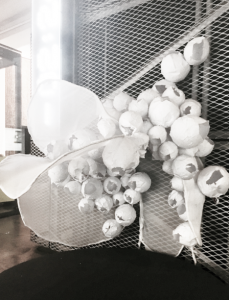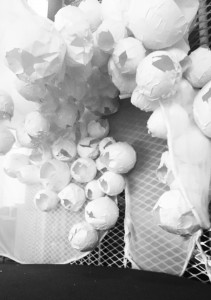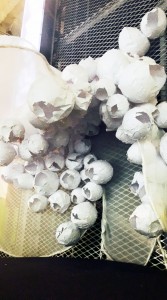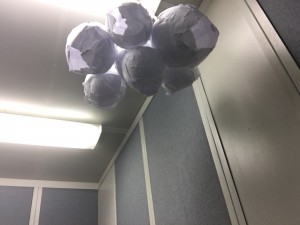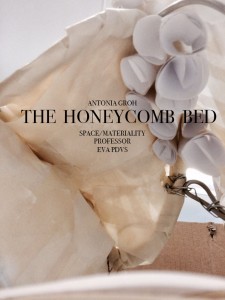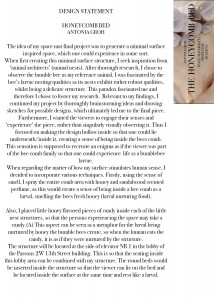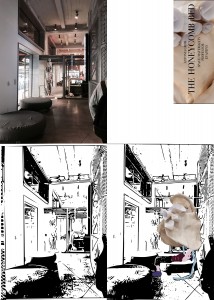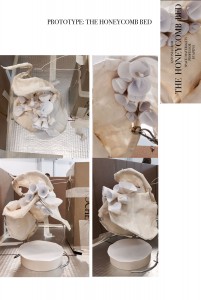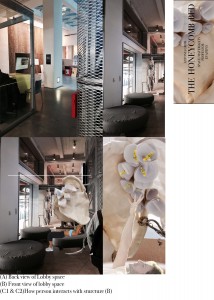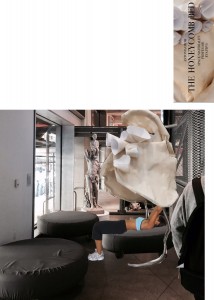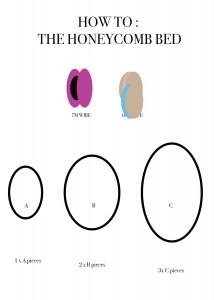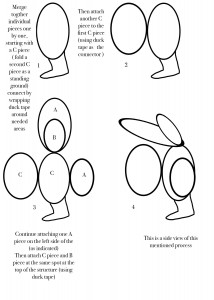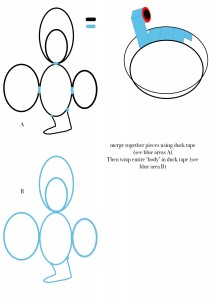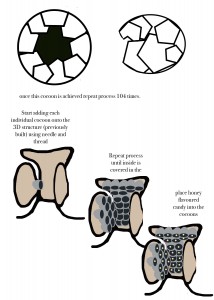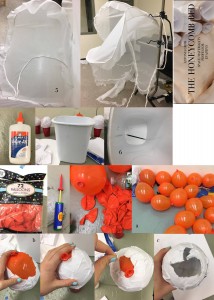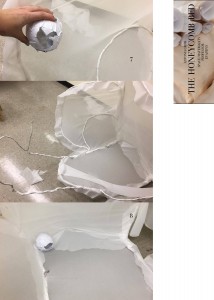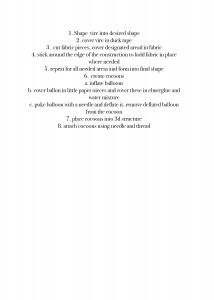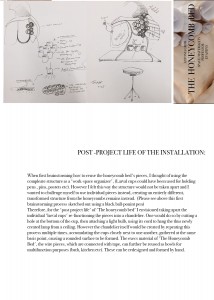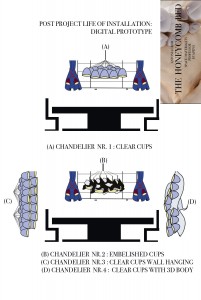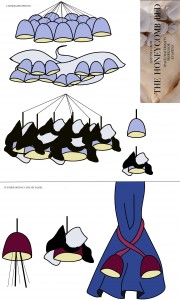The Story of Orange
1. I often wondered about the answer to a much-asked question, ‘Which came first: Orange the fruit, or orange the color?’ (Shannon Mccook, Apparently, its origin dates back to 1280s, which I find fascinating, as it is such an ordinary everyday noun. I hear it was the Chinese who first introduced the world to the Orange, as the fruit is native there, yet it took plenty of iterations before it became a ‘household name’. From narānj as the Arabic community knew the fruit, all the way to the French who lovingly titled the little orange ball ‘Orange’, many believe it was named after the French town of the same name.
But the terminology of the actual color itself has quite a back story too, as it dates back to the 16th century. However, it is clear that the fruit must have come first.
2. Another way I encountered Orange was via tea. Blood orange and orange-cinnamon tea, in particular, are favorites within my family, especially during Christmas. The sweet scent and traditional orange color instantly create a sense of holiday spirit. In fact, fruit tea is a well-beloved beverage, enchanting the world’s taste buds and many making use of its refine flavor and bright color. I hear even royalty has a taste everyone in a while. Yet I hear the Queen of England indeed prefers a more savory flavor, ‘ ‘Twinings’ English breakfast tea in a bone china cup and saucer’ seems to be her taste, as mentioned within the pages of Hello Magazine. Yet her majesty also seems to be a fan of something sweet to go along with it. ‘Cornflakes’. Also, orange in color, the breakfast food must have cast a spell on her majesty, as she reportedly has been devouring it for decades. I wish my friends were as loyal to me as Elizabeth is to her cornflakes.
3. I wonder if The queen would still be eating cornflakes each morning if she knew their origin. According to Matt Soniak’s article, Cornflakes were invented in order to stop one’s sex drive. Surprised? – I was too. Apparently, in the 18th and 19th century, the western world thought it was ever so very uncouth to tough oneself or each other, many wanted to find a ‘cure’ against the body’s desires. Yet Physician John Harvey Kellogg had the solution to this rather odd problem. He believed it was all a matter of choosing the ‘right’ diet. Kellogg’s solution ‘oatmeal and corn meal baked into biscuits and then ground into tiny pieces’, later on, this formula was redefined into Kellogg’s Cornflakes, the ‘cure’ against bodily desires. The Cornflakes were made from Corn, which gave the flakes their prominent light orange color, which remains the same to this day. I wonder if the Queen would still be as loyal to her beloved breakfast if Kellogg’s Cornflakes would still remain truthful today to their odd and clearly outdated advertisement slogan.
4. The color Orange itself is also often used within other adverbs due to its psychological effect on the human brain. ‘Orange’ is known to be stimulating and therefore enthuse the viewer. This, of course, is a very desirable effect to be had on a consumer. Therefore, Orange is used for lettering, labels and such many times, as it is also known to draw attention. One of the most famous examples of such use of the color within the world of advertisement would be ‘Fanta’, but also ‘Orange’ the phone company. Furthermore, I also noticed many sports brands make use of the color, which could be due to its association to energy. However, it is also commonly associated with a sense of spirituality due to its sunsets alike the color scheme – “The color orange makes me think of spirituality and compassion. I find that meditation is helped when I am close to orange objects.” – Sikhme
5. However, R.E.M. a popular band in the 00’s, chose to portray the color, usually associated with rather happy associations, in a rather sinister tone, when retesting their song ‘Orange crush’. The song was written about Agent Orange, an herbicide used by the U.S. Military in Vietnam.
The song’s chorus ‘Follow me, don’t follow me, I’ve got my spine, I’ve got my orange crush’, to me seems as a play on ‘spineless behavior’ of the U.S. Military for using a substance that is toxic to plants and therefore harming the planet.
6. Nevertheless, Orange has always been a crowd favorite, especially ‘Fanta Orange’. The classic beverage, made from “leftovers of leftovers”, as said by Max Keith, was founded during world war 2, due to difficulties of importing Coca-Cola into nazi Germany. The product is made from whey and apple pomace, creating a distinct orange color. The name Fanta itself, occurred due to a pun in German, as together with his colleagues, Keith used his ‘Fantasie’ ( word for imagination in German) to come up with a name for the product, resulting in the first five letters ultimately becoming the name of the beverage.
7. However ‘Fanta’ shall not be confused with ‘Fanta 4’, which is the name of a German pop band. The band playfully used the similarity to the brand by using the color orange within their music videos and styling choice. ‘Fanta 4’, which actually stands for ‘Fantastische vier’ (fantastic four) was particularly popular in the 90’s with their song ‘Troy’. In this music video in particular one can notice a hint of orange in almost all of the shots. This can be seen as yet another playful take on the similarity.
8. Within the 90’s music scene the use of Orange for the styling of music videos was a rising trend. An example for this would be ‘Say my Name’ by Destiny’s Child. The music video features four different rooms, completely designed in a singular color. However, the most prominent room, featuring the main vocalist Beyonce knows, is designed using Orange. This may be so that she is the main focus for the audience, hence the color is particularly bright and noticeable throughout the composition of the music video. This fact becomes even more emphasized as the video progresses and the other rooms designed in blue, white and red, merge with the orange elements of the shoot.
9. Another music video featuring the color blocking trend, popular in music video production during 90’s is Christina Milian’s ‘When You Look At Me’ music video. Even though this video focused more on a rather blood-tinted orange, the traditional version of the color was also heavily portrayed. Another distinctive detail of this particular music video is the fact that Milligan’s make up was designed to match her outfit and scenery background, all in Orange.
10. Red lipstick was a must for any woman of style throughout centuries. However, many forget that, in fact, lipstick was not truthfully red, to begin with, rather it was orange in color. This was due to the fact it was first accumulated by crushing a specific kind of Beatle. In ancient Egypt.
However, many give credit to ancient Sumerians for the invention of lipstick, as some ‘lipsticks’ were able to be traced back to the incredible date of 3,500 B.C.
11. When dissolving lipstick colors throughout history, it is also interesting to note, that although pastors in the 1500’s tried to ban women from painting their lips, Queen Elizabeth I continued to rule her land, wearing lipstick. She counteracted the church, who described colored lips as ‘devil’s work’, creating one of the first ‘fashion statement’ looks, so to speak. All thanks to her Vermilion lips.
12. Vermilion, is known as the reddish orange shade of color gained from the pigment found in the mineral cinnabar. It was one of the most popular colors within renaissance paintings. However, the use of vermilion can be dated back to as early as 79 AD, where its use was evident within a painting in ‘the Villa of Mysteries’ in Pompeii.
The color is associated with warmth, power, and life, hence it was often used for religious painting or portrayal of worship. An example would be Titan’s painting ‘Assumption of the Virgin’ (1516–18), in which he used vermilion to paint the robes, most likely to create emphasis upon the Virgin, as the color would stand out against the cool background. Another example would be ‘the painting of Saint Jerome’ by Masaccio (1428–29) , which also featured the use of the reddish Orange color. However, as the production of vermilion is rather uneconomical, modern day colors which come closest to the recreation of the historic shade would be Pantone Solid Coated 179 C. Furthermore, there are also many of portraits such as ‘The Hampden Portrait of Elizabeth I’ painted by Van Der Meulen (the 1560’s) which also featured Elisabeth’s vermillion lips. When observing the picture, in particular, the one’s in which she is portrayed against a rather monotone background, her vermilion lips truly ‘pop’ and demand attention. To some this could be seen as the first step towards color blocking.
13. The use of color blocking, especially using the color orange has been around for decades. Orange was oftentimes used within propaganda, as it calls for attention and thus attracts the viewer’s eyes. Especially Chinese propaganda posters feature the color. Apart from the previously mentioned reason, this may also be due to the fact, that China’s flag features the colors red and yellow, which merged together equal Orange. Thus the color serves not only the fact of enticing its viewers but representing their motherland all at once.
14. I asked my companion, Caroline Distler, what the color would mean to her and if she had a specific association with it. Immediately Caroline mentioned pumpkins and the celebration of Halloween. When asked why she felt this was her primary association to the rather versatile color, she mentioned that within her motherland, America, the portrayal of Orange seems to be most prominent during this holiday. Moreover, Caroline did state, however, that her home state, Kansas, does not have a specific association with ‘Orange’. Yet when Distler went to visit Florida, she found herself surrounded by the fruit, which imprinted a memory within her, associating Orange with the sunshine state. I foster elaborated upon my question and asked if the color would trigger any other form of emotion or memories. Yet Distler found it difficult to answer, as she felt Orange would not be as prominent within her ever-day life as it may be for someone else. However, she did mention the color reminding her of stationary and coloring pens, both things she was fond of when a child, as well as paper envelopes.
15. Whilst listening to Caroline talking about Halloween and her fondness of Pumpkins, in particular, I recalled my visit to Union Square. There were pumpkins too, all shapes and sizes. The leaves upon the trees were colored in every shade of Orange, from Vermilion to cantaloupe, Apricot to Gamboge. It was like a Kaleidoscope of Orange.
16. I kept waking as the leaves fell down onto the wet pavement of Union Square, a woman walked beside me, her socks also Orange, matching her coat in bright ‘Monarch Orange’. I could tell it was a Burberry coat. I had seen it before, even tried it on myself. It had tassels everywhere. It was incredible how precisely her coat and her socks matched, even though they must have been from different manufactures, as I know Burberry never made plain orange socks.
17. As I followed the lady in the orange coat in awe and then I wondered around the square, just watching the leaves fall, I wondered how many people must have written poems about leaves falling from trees. Trees have been around ever since human waled upon this earth, at least one would think so, thus the amount of poems regarding trees, or much rather Orange leaves falling from them in autumn must be overwhelming.
18. ‘Down, down, Yellow and brown, The leaves are falling, Over the town.’ this poem by Eleanor Farjean called ‘Down, Down’ is precisely the type of poetry I imagined to be written on an ordinary autumn day. Leaves falling, like colorful rain. The color Orange everywhere. However, when one analyses this piece of poetry more sharply, it could be put into context in various ways. Farjean could have simply put onto paper what she saw out of a window or when out on a walk, yet when foster analyzing the poem, I could sense a slightly sinister tone. This could be interpreted as Farjean using color (‘Yellow and Brown’) as a metaphor for aging, the colors signify the death of the leafs. This thought stuck with em as I kept wondering through Union Square, walking through the streets of New York.
19. Further wondering through the market, I bought a bottle filled with Orange oil. Its scent was ever so intense and sweet, almost enticing. Yet the color was not orange at all. I felt it was very bizarre how the fruit and the color have the same name, yet are so clearly dividable. The though often crosses my mind. Two words, identical, yet so very different in meaning. However still remain to have one similarity. The color ‘ Orange`.
20. ‘Orange’, a term ever so shifting, under-appreciated, yet ever so present. It has made its mark through history, both as a fruit and as a color. Enabling painters to build upon its beauty, artists to be inspired by its uniqueness, poets struggling to rhyme upon its wording. However ‘Orange’ in whichever form it may occur surely is one thing always, unique.
‘Orange, the perfect color for me.
The odd one, the bright one.
Fire is orange and I have fire in me.
Orange is beautiful, I am too you see.
Orange always manages to stand out,
I too stand out, always wanting to fit in.
A tear tickles my chin,
as the thought of never to fit in
swims in my mind.
A friend is what I need,
a friend in orange I always find.
Because you see, orange is the color for me.
Nothing will ever rhyme with orange,
and nobody will ever choose me.’
(‘Orange’ By Jenovah)
BIBLIOGRAPHY
Antonia Groh
McCook, Shannon. “Which Came First: The Fruit or the Color?” Community Table. 2014. Accessed December 02, 2016. http://communitytable.parade.com/253694/smccook/which-came-first-the-fruit-or-the-color-orange/.
Hola “A Peek at the Queen’s Breakfast: Twinings Tea, Cookies and Cornflakes.” HOLA. 2015. Accessed December 1, 2016. http://us.hellomagazine.com/cuisine/2015090427085/queen-elizabeth-peek-at-breakfast/.
Soniak, Matt. “Corn Flakes Were Invented as Part of an Anti-Masturbation Crusade.” Mental Floss. December 28, 2012. Accessed December 2, 2016. http://mentalfloss.com/article/32042/corn-flakes-were-invented-part-anti-masturbation-crusade.
Kahn, Wolf. “How Does Orange Make You Feel?” Verywell. September 06, 2016. Accessed December 02, 2016. https://www.verywell.com/the-color-psychology-of-orange-2795818.
“Thoughts on Orange.” Interview by Antonia Groh. December 01, 2016
Idacavage, Sara. Fashionista.com. July 01, 2016. Accessed December 02, 2016. http://fashionista.com/2016/07/best-red-lipstick-history.
Howard, Jacci. “Vermilion. The Other Orange.” About.com Tech. October 14, 2016. Accessed December 03, 2016. http://desktoppub.about.com/od/choosingcolors/f/What-Color-Is-Vermilion.htm.
Collins, Claire. “Orange Poems on Hello Poetry.” Hello Poetry. Accessed December 03, 2016. http://hellopoetry.com/words/4170/orange/poems/.
Jehovah. “Orange Poems on Hello Poetry.” Hello Poetry. Accessed December 03, 2016. http://hellopoetry.com/words/4170/orange/poems/.
